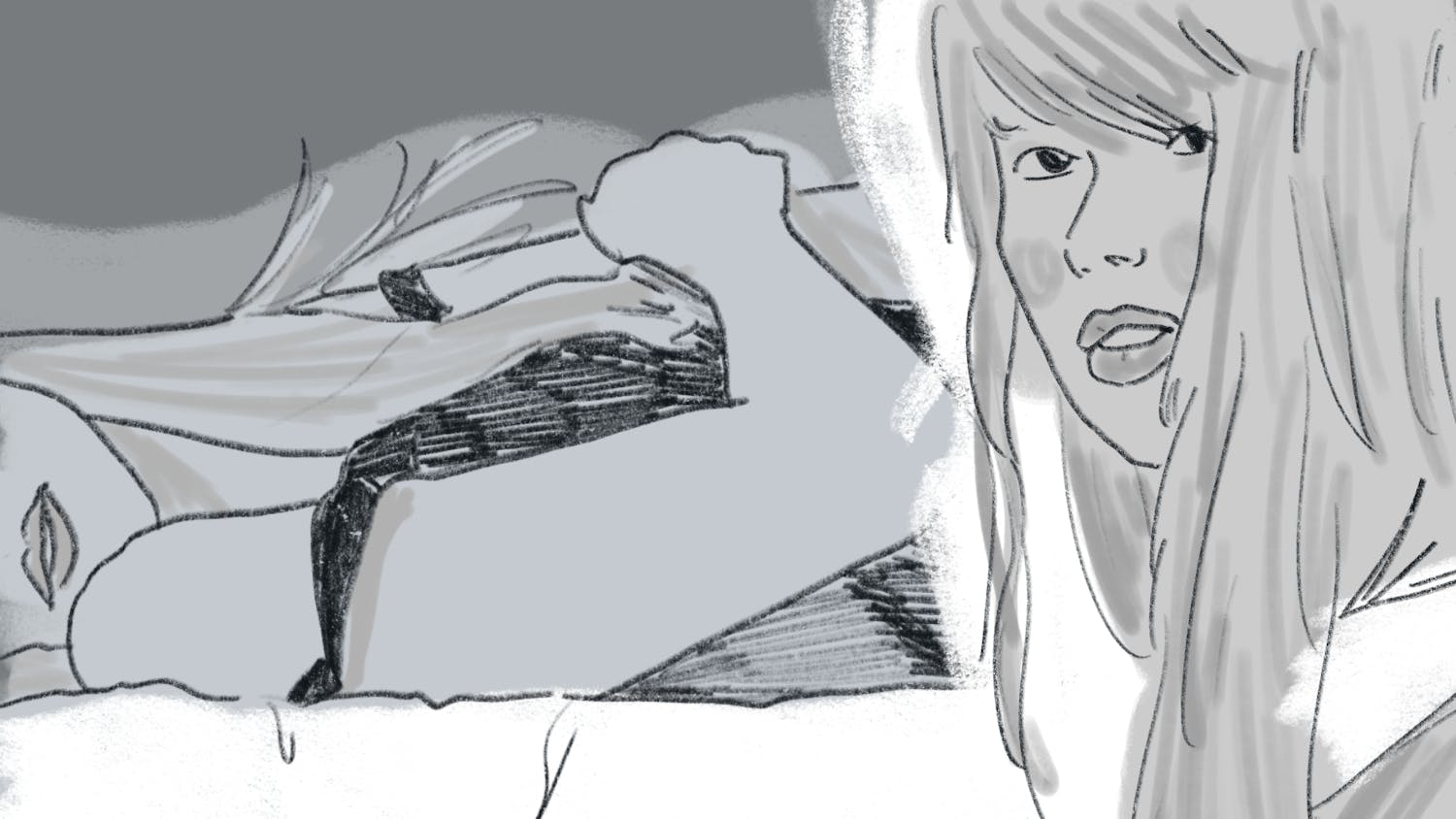A black theater screen illuminates with images of the crashing waters of Niagara Falls. Inspired by Frederic Edwin Church’s iconic 1857 painting, “Niagara,” Phil Solomon’s experimental film, “American Falls,” haunts audiences with its manipulation of historical film and sound bites, weaving reflections of American history into a moving triptych film installation. It is currently on display at the Hood Museum of Art.
Juliette Bianco, associate director of the Hood, and film professors Mark Williams and Jodie Mack saw the exhibition in Queens, New York and wanted to bring it to campus.
“We believed it was the experimental film of the century,” Bianco said.
Commissioned by the Corcoran Gallery of Art in Washington, D.C., in 2000, “American Falls” is the product of 10 years of work. Solomon, a professor at the University of Colorado at Boulder, is renowned for his experimental treatment of film to render textures and effects, playing with the photo-chemical process and using an optical printer in his work.
The images in his film are often abstracted, appearing to be on fire or submerged in water. Moments of American history are the central focus of the film.
“The film’s effects relay the fleeting nature of memory and urge us to hold onto those precious memories,” Bianco said.
Solomon’s use of historical film segments and sound bites grounds the film in reality, as art converges with the story of the past.
There is a “material quality to the images that is compelling,” Williams said. The images show “literal effects of time and decay on film.”
Because the images are filtered through Solomon’s visual vocabulary, the audience must rely on its memories of past films or images to decode the moment in history that is being presented.
Avery Brown ’17, an audience member, was at first unable to understand the connections between the images.
Once the film ended, “it was interesting to see a compilation of America’s vicissitudes and how they have impacted subsequent generations,” Brown said.
In the same way that the mind begins to deposit colors it believes should be present while viewing a black and white film, “American Falls” pushes viewers to extract images they have seen before to gather the meaning of the scene. In this way, our collective “American” subconscious informs the viewing experience.
The film effects demonstrate the importance of understanding our historical past, Williams said.
Bianco added that the film relates the “role filmmaking plays in our memories of history.”
Solomon made the film during the events of 9/11, and it begins and ends with scenes of the Twin Towers. These bookend images further the film’s depiction of the history of America, as 9/11 played a crucial role in altering the public mindset about the American experience. Meanwhile, the sporadic insertion of images of Niagara Falls serve as a symbol of hope and continuity. Bianco proposed that the falls are a symbol of American progress, which correlated with prosperity and hope.
The 55-minute film runs on a continuous loop from 12 p.m. to 3 p.m. on Tuesdays and Thursdays in the Hood auditorium.



